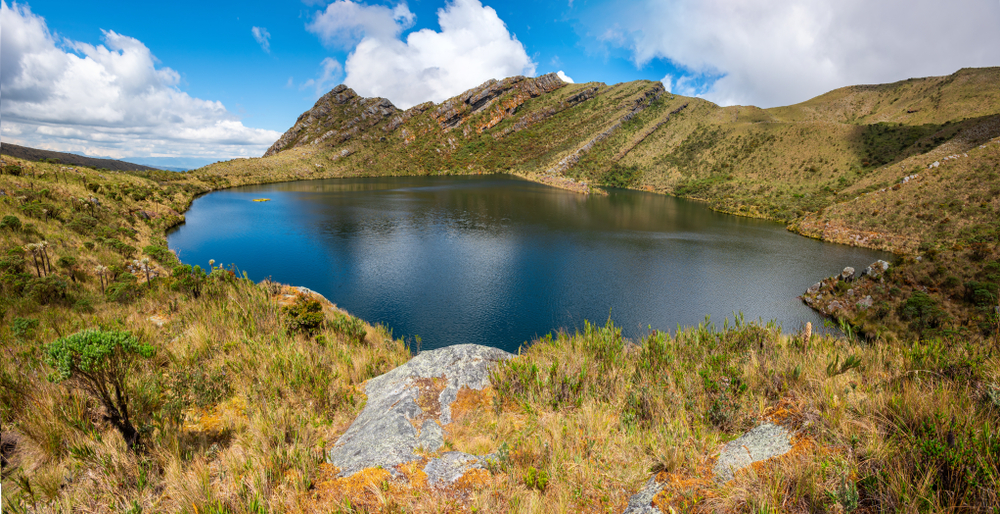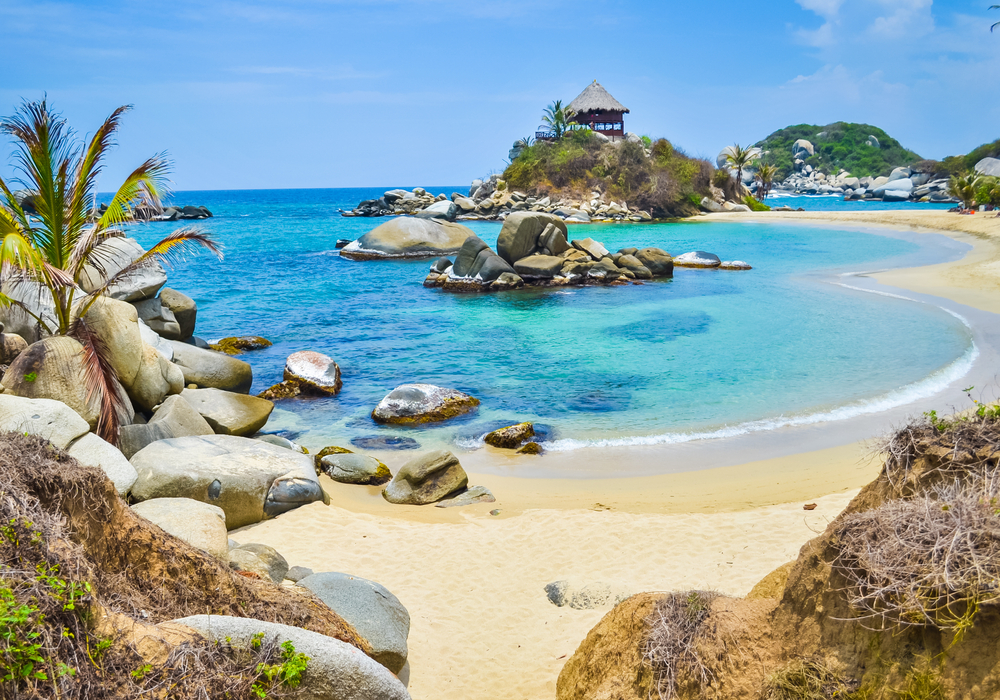Chingaza Overview
Chingaza National Park, known locally as Parque Nacional Natural Chingaza, is a vast protected area located in the Eastern Cordillera of the Andes in central Colombia.
Covering approximately 766 square kilometers (296 square miles), this park is situated in the departments of Cundinamarca and Meta, with its rugged terrain spanning elevations from 800 to 4,020 meters (2,625 to 13,189 feet) above sea level.
It serves as a crucial water source for Bogotá, with its numerous lakes and páramo ecosystems acting as natural reservoirs. The landscape is dominated by misty páramos, cloud forests, and glacial lakes, including the striking Laguna de Chingaza and Laguna de Siecha, which hold cultural and ecological significance.
The park’s terrain consists of rolling high-altitude grasslands interspersed with steep mountain ridges, deep valleys, and scattered rock formations. The páramo, a unique Andean ecosystem, is characterized by frailejones—tall, fuzzy-leaved plants that thrive in the cool, humid conditions.
These plants play a vital role in capturing moisture from the air and regulating water flow. Moss-covered forests, tangled with ferns and orchids, are found at lower elevations, creating a lush habitat that supports a rich variety of flora and fauna.
Chingaza National Park is home to an impressive array of wildlife, some of which are rarely seen due to the park’s remote and rugged nature. One of the most iconic residents is the spectacled bear, the only bear species native to South America, which roams the dense forests and páramos in search of food. Other notable mammals include the Andean deer, puma, tigrillo (small wildcat), and tapir, each playing a role in the park’s delicate ecosystem.
The birdlife is equally diverse, with species such as the Andean condor, black-chested buzzard-eagle, and the vibrant mountain tanager soaring through the skies. Hummingbirds are also a common sight, flitting among the flowering plants, while the elusive rufous-fronted parakeet finds refuge in the park’s high-altitude forests.
Visitors to Chingaza National Park can explore its breathtaking landscapes through various hiking trails that wind through the páramos and around its glacial lakes. The Laguna de Siecha trail is a popular choice, offering stunning views and a glimpse into the indigenous Muisca culture, which considered these waters sacred.
Wildlife watching is another major draw, with early mornings providing the best chances of spotting rare species. The park also serves as an important site for environmental education, attracting researchers and conservationists interested in its unique ecosystems. Photography enthusiasts find endless inspiration in the ever-changing mist, dramatic cloudscapes, and vibrant plant life.
Chingaza National Park faces conservation challenges, particularly in balancing ecological protection with the growing demand for water resources. Climate change poses a threat to the fragile páramo ecosystem, potentially altering water cycles and impacting biodiversity.
However, the park has been a success story in conservation, with active reforestation efforts, wildlife monitoring programs, and strict visitor regulations helping to maintain its ecological integrity. Its role as a water source for Bogotá highlights the importance of sustainable management, ensuring that both nature and people can continue to benefit from its existence.












































































